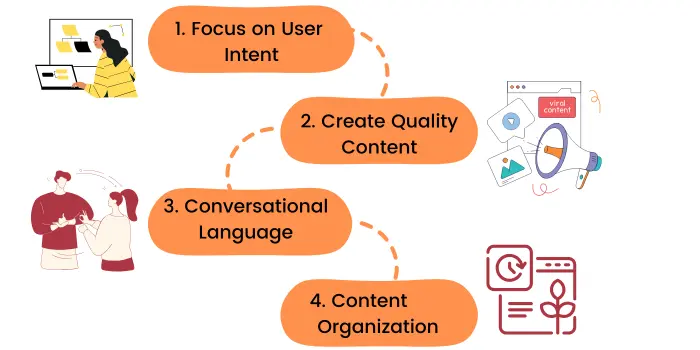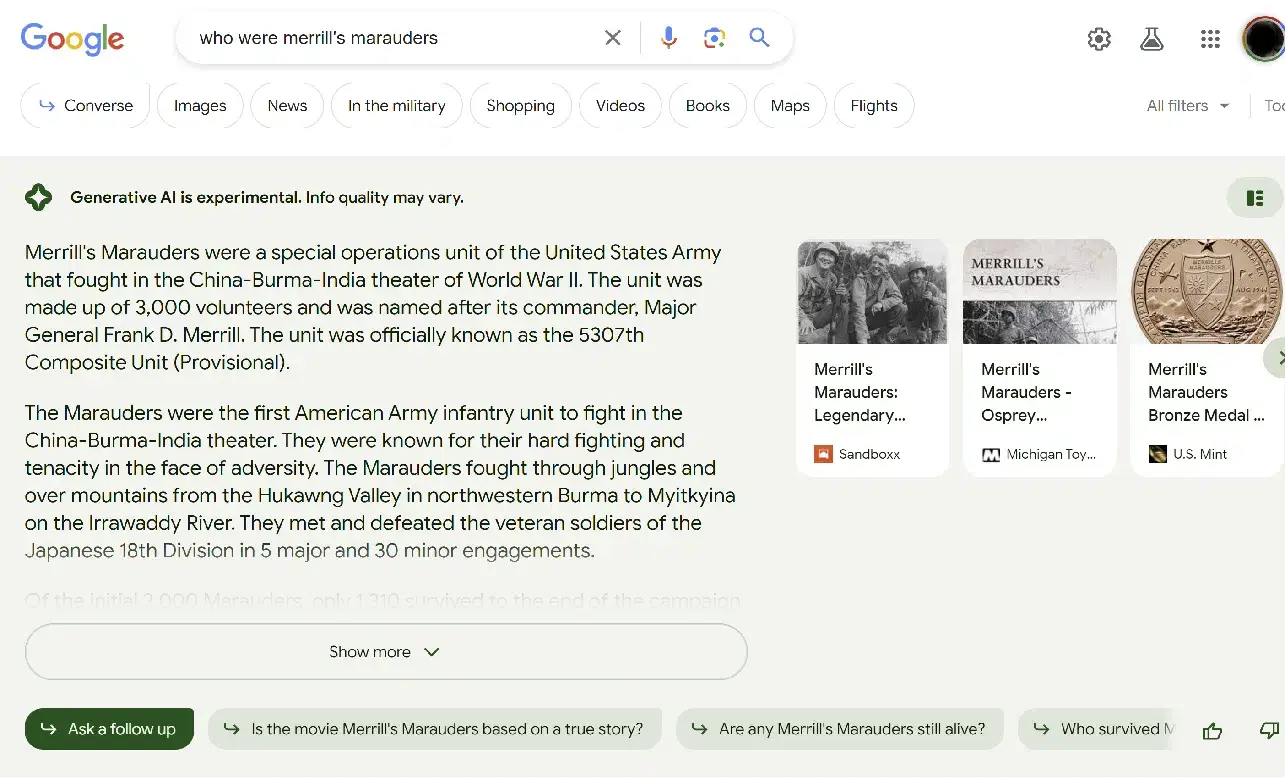

Imagine this: You run a small online store that sells eco-friendly products. Over the years, your website has relied on traditional SEO strategies like adding keywords, getting backlinks, and posting regular blog updates. But recently, you’ve noticed a drop in traffic and sales. Curious about why this is happening, you do some research and discover that search engines, like Google, are shifting to AI-powered tools like the Search Generative Experience (SGE). These tools aim to provide users with quick and direct answers, often without them needing to click on links.
Reports indicate that SGE's AI-generated answers have reduced click-through rates (CTR) for organic search results, as users often find the information they need within the AI-generated summaries. This shift makes you realize that your SEO strategy needs a serious update.
It’s no longer just about getting your website ranked; it’s about making sure your content is clear, helpful, and aligned with how AI-driven search engines process and display information.
In this blog, we’ll explore how businesses like yours can adapt to this new landscape by understanding "SEO for AI." Whether you’re a small business owner, a content creator, or a digital marketer, these tips will help you thrive in the AI-driven search era.
AI helps search engines understand the words and the intent behind a search. In the past, you might have typed a keyword like "best smartphones 2024." A traditional search engine would have given you a list of websites containing that phrase.
With AI, the system tries to understand what you actually want. Are you looking for reviews? A buying guide? A comparison of features?
Google’s SGE takes this further by generating summaries at the top of search results. For example, if you ask, "What are the best smartphones under INR 500?" Google might provide a detailed summary of the top phones without you needing to click any links.
This feature means search engines are doing more of the "thinking" for users, making it crucial to optimize content to meet their evolving needs.

Traditional SEO relied heavily on keywords and backlinks. While these are still important, AI-driven search engines like SGE now prioritize user experience, context, and relevance. It’s no longer about stuffing your content with keywords; it’s about answering questions effectively and offering unique insights.
For example, if you write a blog about "best coffee makers," AI will analyze your content to see if it answers common questions, provides useful comparisons, and adds value beyond basic product descriptions. AI-driven search engines look for depth and originality.
The first step in mastering SEO for AI is understanding how users search today. AI search engines analyze context, so think about the questions your target audience might have and structure your content to answer them clearly. Let’s break this down.

When creating content, put yourself in the reader’s shoes. What do they want to know? What problems are they trying to solve?
For example, if someone searches for "how to bake chocolate chip cookies," they aren’t just looking for a recipe. They might want to know tips for getting the right texture, common mistakes to avoid, or how to store the cookies.
To cater to this, write content that goes beyond a simple recipe. Share advice, explain techniques, and anticipate follow-up questions. This approach signals to AI search engines that your content is comprehensive and valuable.
High-quality content is key to ranking well in AI-driven search engines. It means writing clear, engaging, and accurate information that satisfies user needs. Avoid fluff and repetitive phrases. Every sentence should add value.
For example, instead of writing, "Chocolate chip cookies are a popular dessert loved by many people around the world," try, "Chocolate chip cookies are a timeless treat known for their chewy centers and crispy edges." The second sentence is more specific and engaging.
Quick Read: You can read our guide on creating high-quality content.
AI tools often mimic how people talk. Google’s SGE, for instance, tries to summarize answers conversationally. This means your content should feel natural and friendly. Instead of using formal or technical language, write as if you’re talking to a friend.
For instance, instead of saying, "This guide will elucidate the steps involved in cookie preparation," say, "This guide will walk you through how to bake cookies step by step."
Quick Read: Check out our seven easy tips on effective content writing.
AI-driven search engines love content that’s easy to read and navigate. Break your text into smaller paragraphs and use headings to guide readers. A clear structure makes it easier for AI to identify key points.
Let’s say you’re writing about the health benefits of yoga. Instead of a long block of text, divide it into sections like "Physical Benefits," "Mental Health Benefits," and "How to Get Started." This helps both readers and AI systems quickly understand your content.
Quick Read: Read more on why your business needs interactive content.

SGE represents a big shift in how Google displays search results. Instead of just showing a list of links, it offers AI-generated summaries that answer queries directly. To ensure your content stands out in this new environment, you need to tailor it for SGE.
AI tools like SGE often extract direct answers to user questions. For example, if someone asks, "What are the benefits of meditation?" and your content says, "Meditation improves focus, reduces stress, and enhances emotional well-being," it’s more likely to appear in the summary.
Make sure your answers are clear, concise, and fact-based. If you’re discussing a complex topic, include a short summary at the beginning of your article.
Google’s AI prioritizes content that offers unique value. Don’t just repeat what others are saying. Share personal experiences, case studies, or data. For instance, if you’re writing about SEO for AI, include an example of how you optimized your content for SGE and saw improved traffic.
Long-tail keywords are specific phrases that match how people naturally ask questions. For example, instead of targeting "coffee makers," aim for "best coffee makers for small kitchens." Long-tail keywords are particularly important for SGE because they align with conversational queries.
Let’s imagine you own a fitness apparel brand and have recently noticed that fewer people are visiting your website despite maintaining your usual SEO practices. A deeper dive reveals that your target audience is searching for more detailed, conversational answers—questions like, “What’s the best gym wear for intense cardio?” or “How does sweat-wicking fabric work?”
With AI-driven search engines like Google’s Search Generative Experience (SGE), users are increasingly presented with summarized answers directly in the search results.
To optimize your content for this AI-driven environment, you start by understanding your audience’s intent. Instead of a generic blog about your products, you create a piece titled, “Why Sweat-Wicking Fabric is a Must-Have for High-Intensity Workouts.” The blog dives into user-specific questions, such as the science behind sweat-wicking fabrics, their benefits, and how your products outperform competitors.
You also focus on conversational language, writing in a friendly tone that feels approachable. For instance, instead of technical jargon like “hydrophobic textile technology,” you explain, “Sweat-wicking fabrics keep you dry by pushing sweat to the surface, where it can evaporate quickly.” This simple language makes your content relatable and easy for AI to summarize.
To enhance relevance, you include direct answers in the form of FAQs. For example:
By addressing these queries clearly and concisely, your content becomes a top contender for AI-generated summaries. Within weeks, you notice a gradual increase in traffic and engagement, proving that adapting to “SEO for AI” isn’t just a trend but a necessity for staying visible in today’s search landscape.

AI-driven search engines will continue to evolve. As tools like SGE become more common, they may integrate more interactive features, such as recommending related content or even allowing users to refine their queries in real-time.
Staying ahead in SEO for AI means continuously improving your content. Keep it fresh, relevant, and aligned with what users want. Experiment with formats like video or interactive charts to engage audiences in new ways.
The introduction of real-time search through tools like ChatGPT with Bing integration is reshaping how people find information online. Instead of sifting through multiple links, users get instant answers, often in a conversational format. This changes the game for SEO in several ways.
One major shift is that content creators will need to prioritize freshness. Real-time search thrives on the latest information, so outdated content may quickly lose relevance. Businesses will have to ensure their content is updated frequently to stay competitive. This is especially important for industries like technology, fashion, and health, where trends and insights evolve rapidly.
Another change is the focus on conversational content. Real-time AI tools are designed to mimic natural conversations, which means they prioritize content that feels engaging and relatable. Businesses will need to rethink their tone, moving away from overly formal or complex writing toward a style that feels like talking to a friend.
Local SEO could also see a transformation. Real-time search tools can integrate live data, such as current store hours, weather conditions, or local events, making hyper-local and time-sensitive content more important. For example, a restaurant might gain visibility by ensuring its menu, reviews, and promotions are updated and easily accessible for AI to pull into responses.
Lastly, competition will increase. With AI summarizing and providing answers, fewer users may click through to websites. Businesses will need to focus on creating standout content that AI deems valuable enough to include in its results. This could mean offering unique insights, expert opinions, or exclusive data to make your content irreplaceable.
SEO for AI isn’t about abandoning traditional SEO practices but adapting them to meet the demands of AI-driven search engines. By focusing on user intent, creating high-quality content, and tailoring your approach to tools like Google’s SGE, you can ensure your content remains visible and valuable.
As search engines become smarter, the key is to think like your audience. What do they need? How can you provide it better than anyone else? By answering these questions, you’ll not only optimize for AI but also build trust and engagement with your readers. The future of SEO for AI is here, and it’s all about creating content that truly connects.
Get a team of experts who can write you with the best strategies on SEO for AI. Give us a visit on website or ping us on [email protected].



I have read and accept the Privacy Policy
Read More